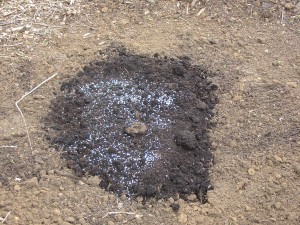Do you know what your soil needs to grow a great lawn, flower, or vegetable garden? If you haven’t analyzed the soil in the past five years, get it done in any season. Most gardeners do it in late winter when university, state, and private soil labs are busiest.
The local Extension office or a garden center can supply you with one or more sample kits with instructions and forms detailing how to sample. Mail the soil, form, and money to the soil lab.
If soil conditions have drastically changed because great amounts of organic matter, topsoil, etc. were added or accidentally spilled fertilizer or another chemical, retest your soil. Do you have a special problem area? Separately test this spot and explain the problem. Photos are optional.
In early fall, before you’re ready to tackle a major fescue/bluegrass lawn renovation, soil test before the work starts. Be sure to mark on the form that you want recommendations for a lawn. With a lab results in hand, they detail how many pounds of fertilizer to apply. If lime or sulfur to raise or lower the soil pH, that is included on your report.
If you’re planting acid-loving plants such as azaleas, blueberries or mountain laurels (Kalmia app.), inform the soil lab; they will estimate when and how much sulfur to apply. Planning a home fruit orchard (apples, peaches, plums, grapes, brambles), tell the lab intended use of the land.
Basic sampling instructions: using a trowel, take 8-10 random samples of topsoil from various parts of your yard. Dig only 5-6 inches deep. Mix all together thoroughly in a bucket. Place a small amount of the soil mixture in a paper (not plastic) bag or box, enough to fill a small baby food jar. Do not ship wet soil.


 Posted in
Posted in 
